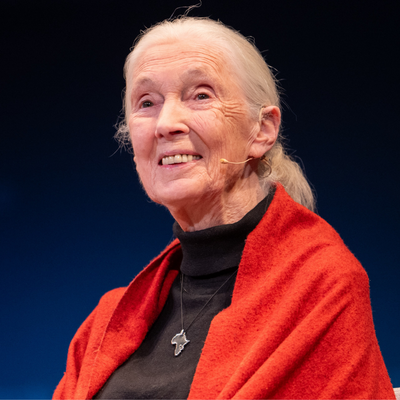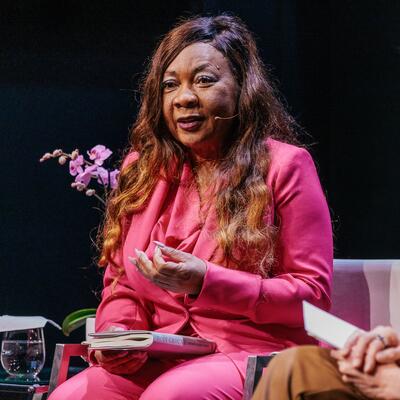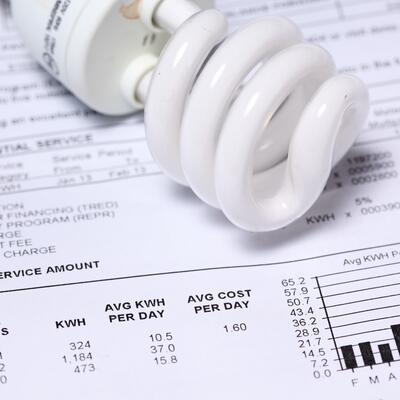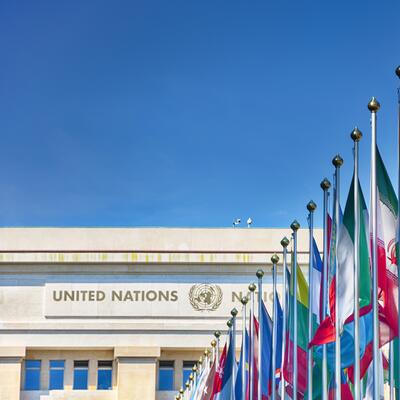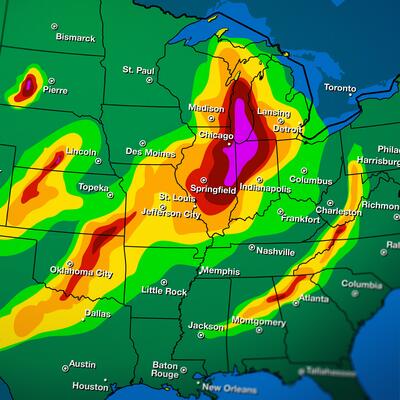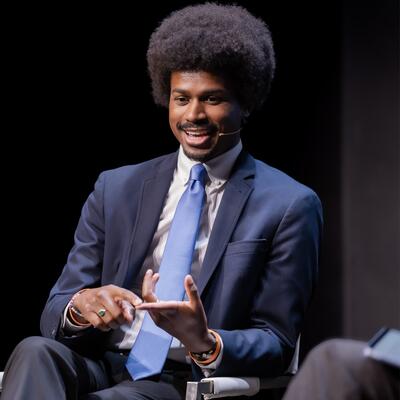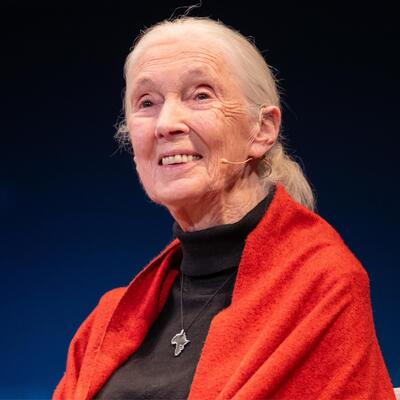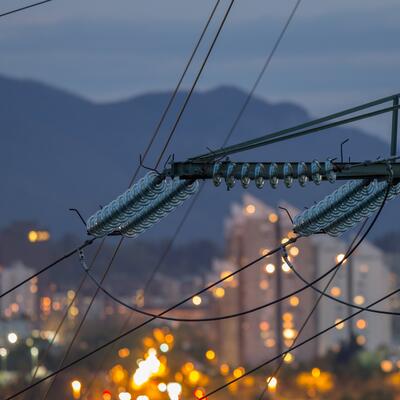
This Year in Climate: 2024
Guests
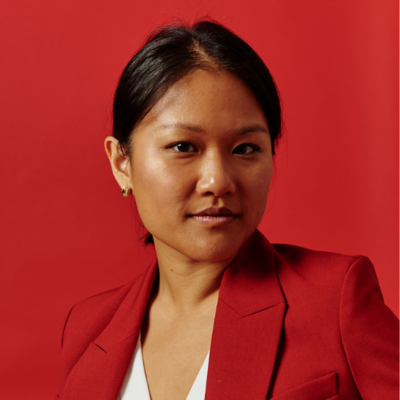
Karen Hao
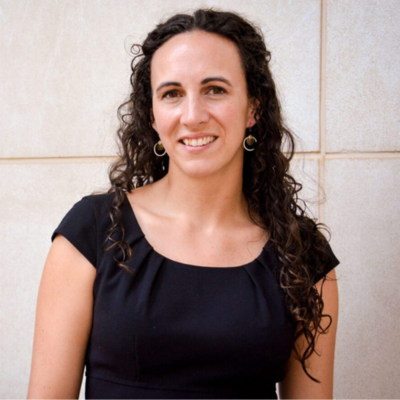
Shelley Welton
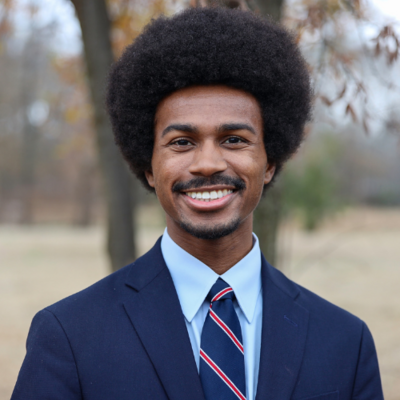
Justin J. Pearson
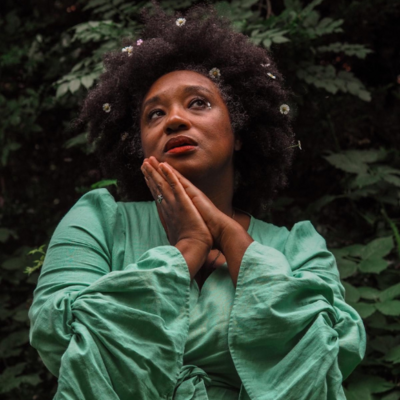
Aja Barber
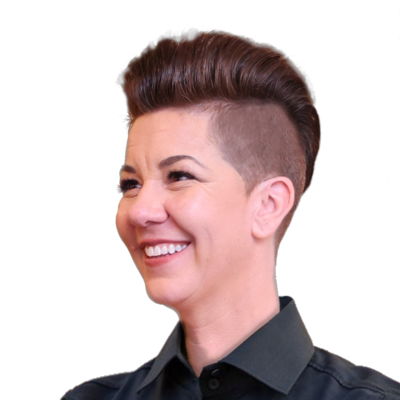
Jamie Beard
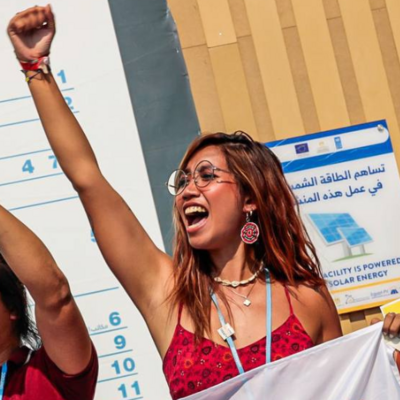
Mitzi Jonelle Tan
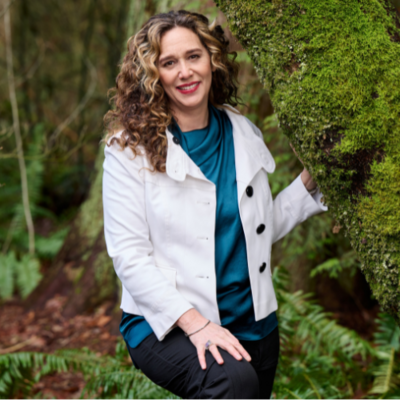
Tzeporah Berman
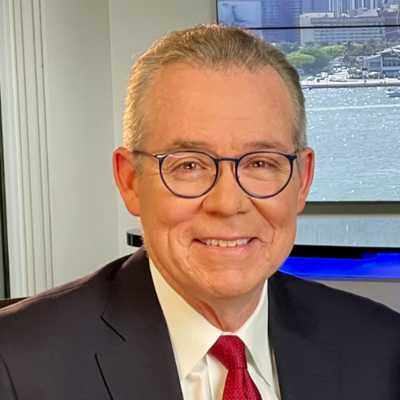
John Morales
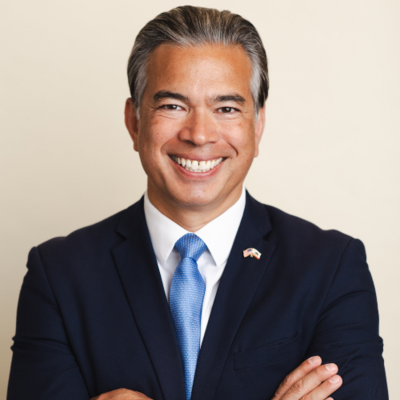
Rob Bonta

Emily Raboteau
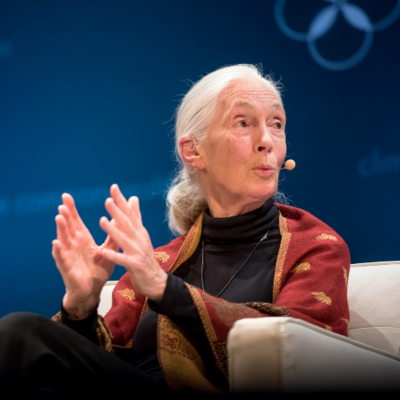
Jane Goodall
Summary
2024 set new records for extreme heat around the world in what is already the warmest decade on record. According to the World Meteorological Organization, sea-level rise and ocean heating are accelerating along with the loss of ice from glaciers. We continue to see extreme weather of all kinds wreak havoc on communities across the world.
At the moment, the biggest news for climate and the country is the re-election of Donald Trump to a second term as President. The Trump administration will undoubtedly target regulations and laws passed during the Biden administration for rollback. That includes the biggest climate bill ever passed into law, The Inflation Reduction Act. It’s unclear how many of the IRA’s clean energy incentives will survive.
On the other hand, constituencies for clean energy are broader and stronger than the last time Trump came into office. Technologies are more mature, markets are more robust — and more people are driving electric cars and making them.
Here’s what else we’ve been talking about this year on Climate One:
The Artificial Intelligence arms race is on. And that’s bad news for emissions. Microsoft alone has seen their emissions grow 30% largely due to AI. Karen Hao of the Atlantic says, “[Microsoft is] spending around 10 billion dollars a quarter now, whereas they used to spend just a few billion dollars. And one of the semiconductor analysts has mentioned that this could potentially be the largest infrastructure build out that humanity has ever seen.”
Among our many incredible guests this year was Justin J. Pearson. Many would recognize him as one of the Tennessee state representatives expelled after protesting for meaningful gun regulation in the wake of the 2023 Covenant School shooting. Pearson is also a fierce environmental justice advocate. He says, “I believe that it is a movement of angelic dissenters and this movement for justice rooted in love that say there has to be a subversion to this status quo. That's not just going to save our planet, but save the people who are here.”
We’re also tracking renewed interest in nuclear power and geothermal energy. “Everywhere in the world, below the surface, geothermal exists. Everywhere. The question is only, how deep is it,” says Jamie Beard, founder of Project Innerspace. Conventional geothermal energy has been around for a while. But advances in drilling – that ironically come from the fossil fuel industry – could help make geothermal power more viable basically anywhere.
What you buy and wear matters for the climate, too. “60 percent of the fabrics on our planet currently are polyesters and polyfibers are plastics. They come from fossil fuels,” says Aja Barber, author of “Consumed: The Need for Collective Change: Colonialism, Climate Change and Consumerism.” If you want to be a more mindful consumer of clothing or other goods, buy LESS, wear and repair what you already have, second-hand or used is great, and when you do buy new, look for brands with commitments to worker rights, fair labor and sustainability metrics.
Some may remember the viral video of a weathercaster breaking down during his forecast of rapidly-intensifying Hurricane Milton. That man is Hurricane Specialist for WTVJ NBC6 Miami, John Morales. The speed with which these tropical storms are reaching high-intensity hurricane status is what keeps Morales up at night. “One of these days, there's going to be a mundane tropical storm in the central Bahamas, which 36 hours later is going to make landfall in Miami as a category four hurricane and catch everybody off guard.”
Yet optimism for our future continues. At 90 years old, environmental icon Jane Goodall still sees the positive in the race to address the climate crisis, “ I do travel all over the world, just about. And everywhere, just about every culture, there are people, more and more people, passionate about the environment. I think that's one very positive bit of news, that more and more people understand, more and more people want to do something about the climate.”
Episode Highlights
3:10 - Karen Hao on walking around an data center in the Arizona desert
7:24 - Justin J Pearson on the lack of transparency around XAI
15:44 - Shelley Welton on the electric grid and regional planning
20:03 - Jaime Beard on advancements in geothermal energy
26:11 - Aja Barber on the climate implications of clothing and colonialism
30:43 - Mitzi Jonelle Tan on colonialism and the climate crisis
35:03 - Tzeporah Berman on the Fossil Fuel Non-Proliferation Treaty
42:10 - John Morales on his viral weathercast moment
48:07 - Rob Bonta on suing Big Oil
51:15 - Emily Raboteau on climate anxiety and parenting
Resources From This Episode (4)
Full Transcript
Note: Transcripts are generated using a combination of automated software and human transcribers and may contain errors. Please check the actual audio before quoting it.
Greg Dalton: I’m Greg Dalton.
Ariana Brocious: And I’m Ariana Brocious.
Greg Dalton: And this is Climate One.
[music change]
Ariana Brocious: And here we are again, at the end of the year. It’s become tradition for us to spend one episode looking back over the last 12 months, to remember what happened.
Greg Dalton: And to reflect on some of the most inspiring and empowering conversations we had this year.
Ariana Brocious: Right. So, let’s start with the news. Obviously the biggest story would be the re-election of Donald Trump, and what that will mean for our climate. In sum, it’s pretty bad. We spent a whole episode digging into the potential impacts two weeks ago, so if you haven’t listened to that yet – please do.
Greg Dalton: The high level takeaways are these: Trump plans to erase many of the climate wins of the Biden administration, and he is already appointing people to carry out those plans and doubling down on the fossil fuels that are driving extreme weather.
Ariana Brocious: The courts may play an even bigger role in weakening environmental and climate protections.
Greg Dalton: On the other hand, Constituencies for clean energy are broader and stronger than last time Trump came into office. Technologies are more mature, markets are more robust – and more people are driving electric cars and making them. All is not lost.
Ariana Brocious: In our bubble as climate folks, I think it was easy to think that more voters would be motivated by climate change this election, all the extreme weather we’ve been seeing. But a lot of the post-election analysis has indicated that wasn’t the case. Voters responded more to inflation and the economy and social issues like abortion rights.
Greg Dalton: Yeah, and while that’s true, it also seems like more people may be ranking climate as a higher priority this year and going forward. The Environmental Voter Project says they mobilized more than 640,000 first-time climate voters across 19 states. They also recognized that was far too few to change the outcome.
Ariana Brocious: Alright, well, Greg, we each brought a trend that we paid attention to this year. You start.
Greg Dalton: Okay, well for me this was the year that AI really came into common use in a big way, and we’ve already seen how its INCREDIBLY HIGH energy demands are reshaping our energy economy. Back in April, I talked with Karen Hao of the Atlantic, who’s been reporting on this. One of the most stunning parts of our conversation was hearing her describe walking around a data center in the Arizona desert:
Karen Hao: I was in the middle of this really kind of desolate area within Arizona where there's farm fields on one side and then there's kind of just desert land for miles and miles and miles. And when I stepped out, it was like 97 degrees and it was, that was actually the coldest, coldest day of that week. And the first thing that I thought was, well, let me try walking around this data center just to get a bodily sense of how big this is, because I could see it stretching out further than I could see. So I just started walking and thinking, Okay, I'm just going to time myself and see how long it takes me to walk around the whole thing. Uh, and it did not work. Within two legs of the rectangle, I just started feeling very, very heat exhausted, and I'd run out of water. It had already taken me around 20, 25 minutes, and I was like, I gotta get out of here. I'm gonna pass out if I don't leave. And it was, it was a really stark kind of illustration of how big these things are and also where we're actually building these giant silicon monstrosities.
Greg Dalton: And you've written that Microsoft alone is on pace to build between 50 and 100 new data centers each year for the foreseeable future. How much of that growth is due to AI?
Karen Hao: A significant amount of that growth is due to AI. Of course, we can't fully ascertain because these companies, and Microsoft in particular, does not actually have any transparency into the amount of AI growth that they're experiencing and what share of their data center growth is driving or supporting the AI development and AI use, but you can just see kind of from the historical patterns for Microsoft that once they made this all encompassing commitment to support Open AI, which is the main driver of the AI revolution right now, the amount that Microsoft has been spending on data centers has dramatically increased. So they're spending around 10 billion dollars a quarter now, whereas they used to spend just a few billion dollars. And one of the semiconductor analysts has mentioned that this could potentially be the largest infrastructure build out that humanity has ever seen. That is the scale we're talking about. It's bigger than the amount of spend for the Transcontinental Railroad. It's bigger than the space program. So this is the sheer amount of money that Microsoft is funneling at a time when they are supporting all of this AI development is, I think, a signal that a lot of it is tied to that drive.
Greg Dalton: And since I talked with Karen Hao, things have accelerated. Microsoft’s emissions jumped 30 percent largely due to the AI race. That’s putting the company’s climate goals at risk. To feed its ravenous energy appetite Microsoft announced plans to restart power production at the Three Mile Island nuclear plant.
Ariana Brocious: Yeah and what’s scary to me is how pervasive AI has already become. I’m being encouraged to use it on platforms like Zoom, and even a simple google search now uses AI without me asking for it – it’s just built in.
Greg Dalton: We need to be mindful that AI is a broad category and not all AI activities use massive amounts of energy. “Predictive AI”, which is used in weather forecasting or reading a mammogram, for example, doesn’t require nearly the same power as “generative AI” which is used in Chat GPT or making fake videos. Still, AI demand for computing power is pushing electricity prices up for regular people.
Ariana Brocious: That has implications not just for climate, but for climate justice. One of our SUPER compelling guests this year, Tennessee state representative Justin J Pearson, made that connection.
Greg Dalton: Yeah, Justin J. Pearson was definitely one of the most inspiring conversations of the year. And we talked about this topic of fossil fuels and AI – because earlier this year Elon Musk’s company XAI swooped in and set up shop in Memphis, with very little public knowledge or consent.
Justin J. Pearson: It is kind of amazing, right? They got all this fancy technology and tools, and it's just like, and you can't use that same technology to figure out how to do something in a way that doesn't pollute and kill communities. All this knowledge and information you got all these resources and scientists you got and you still can't figure out how to have a facility that doesn't use so much energy? Look, this XAI plant currently is using about as much energy as could power 80,000 homes, 1.2 million gallons of water a day. And just recently we learned they're seeking to double this. But the way that it came about is so typical for how projects that exploit communities show up. One day you watch the news and you learn that it's coming. There hasn't been a community meeting. It's in my district and I haven't learned anything about it. Um, city counselors, I called them. They hadn't learned anything about it. It was a deal struck between the chamber of commerce, the previous mayor and the current mayor, and then we're all supposed to just celebrate it. But no one asked the real questions about the project. And so. When it shows up with 18 fossil gas turbines that are operating every single day, polluting the air quality in a county that already has an F in air quality, in a neighborhood that already has a cancer risk that's 4.1 times the national average. The community is the one that has to fight for itself.
Greg Dalton: Pearson is such an environmental and climate justice leader. He rose to national prominence for being expelled from the state house after protesting against gun violence in solidarity with his constituents. And he sees clear connections between gun violence and climate change driven by burning fossil fuels.
Justin J. Pearson: Absolutely, absolutely they're common threads. I mean, one way is, you look at it is this. The same communities that are impacted by pollution are the ones that are being devastated economically with opportunity, being educationally deprived, and are also the most polluted. There's intersection of the injustices.
Greg Dalton: So pollution and guns are concentrated in the same places.
Justin J. Pearson: In the same places. And it's no coincidence that places that have more lead pipes and less infrastructure, positive good infrastructure are also places where you have incidences of more of the effects of crime or violence. The intersection is really about, Where is our society not caring for people? And where is, as Dr. Mustafa Santiago Ali is saying, there being places that are sacrifice zones. And those places, overwhelmingly, overlap. We can't separate the harms that are happening to our communities, the extraction that's happening from corporations and the attitudes and the actions of people in power that perpetuate not just pollution, but perpetuate poverty, perpetuate inequality and injustices that have long-term ramifications.
Greg Dalton: And I've heard you talk about people who see this status quo and think like, well, that's just how it is. Or that's like, the way it always will be and you mentioned angelic dissenters, people who are comfortable with the status quo and ought to say, like, Oh, it doesn't have to be. So let's say a little more about angelic dissenters.
Justin J. Pearson: Yeah, the realities that we are experiencing, that our children, our nieces and our nephews are experiencing, are not isolated, but rather they are part of a lot of systems interplaying and interlocking in ways that oftentimes is creating harm. I think the reality that I learned as well post, uh, George Floyd's lynching and Breonna Taylor's lynching and Ahmaud Arbery's lynching is that we have social structures and systems set up that are leading to these different outcomes for people. In all of our communities and the reality that there's not going to be one singular fix There's not going to be one singular way, there's going to have to be a way that we think about injustice and think about changing it. And the way that we have to do that is by being angelic dissenters and that's in two ways: One is that what we are talking about right here is pure. Everybody deserves clean air, clean water, clean soil. I want that for everybody, right? Like what we are talking about is a pure reality. Everybody deserves access to the opportunity to be who God has called for them to be, to be beloved. Right? This is pure. And we have to dissent to a status quo that is saying different. A status quo of economic exploitation, a status quo of educational deprivation, a status quo that says you all deserve to have plants and deserve to have pollution and deserve to have politicians who don't care about you. And then these folks over here, they deserve all the good things. We have to dissent to that. We dissent to unjust policies, unjust practices, unjust people in positions of power. We have to dissent. And I believe that it is a movement of angelic dissenters and this movement for justice rooted in love that say there has to be a subversion to this status quo. That's not just going to save our planet, but save the people who are here. Save lives of people like my grandmothers, God rest their souls, who died from cancer because of 17 toxic release inventory facilities being around our community. We have to dissent to this. And we have to do it in a way that is pure, that is love centered, and that is people centric.
Greg Dalton: That’s really powerful Angelic dissenters.
Ariana Brocious: Yeah I was really in awe of him when we had him on the stage.
And he’s only been in politics for a few years. So hopefully he’s got a long career ahead of him.
Music Cue
Greg Dalton: Ariana, what was a trend you kept an eye on?
Ariana Brocious: Well, I’m kind of a geek for the electric grid.
Greg Dalton: You’re an energy nerd!!
Ariana Brocious: It’s true. Partly because it is SO fundamental to how a lot of these energy and power decisions happen, and partly because so few people seem to really understand it well – it’s complicated, wonky, lots of bad acronyms, just not that easy to understand.
Greg Dalton: Yeah, it’s wonky and nerdy and lots of acronyms. We just want it to work. I don’t really want, need to know how it works. Just bring it to me please, and reliably and affordably. Um, yeah.
Ariana Brocious: Yeah. And it is, super essential. Right now, the U.S. electric grid is too small, too regionalized, and outdated to serve our current needs, much less our future electricity needs. We need a LOT more bandwidth to connect all the hundreds of renewable energy projects that are being built, and to interconnect different regions of the country so we don’t have as many blackouts.
Greg Dalton: Yeah and that’s leading to higher electricity bills for a lot of Americans.
Ariana Brocious: Right. And one way we could solve some of these problems is by getting utilities to plan better together – both within and across different regions.
The agency that regulates most utilities around the country is called the Federal Energy Regulatory Commission, or FERC. Here’s Shelley Welton, a law professor at the University of Pennsylvania, explaining how the process of regional planning works now:
Shelley Welton: Basically to shorthand it, they say like, you should get together in a region and you should make a plan together. You should look ahead, figure out what needs are going to be. And then as a region, pick a set of lines that's going to best meet those needs. In practice, that doesn't really happen very often. What ends up happening more often is that utilities each prefer to build lines within their own service territories that they completely control and that they make money off of. And the region kind of adds up all of these local lines, and that becomes the plan. So, the ideal is pretty far from the practice at present.
Ariana Brocious: There was some progress made this year when FERC passed a new regulation called Order 1920. It requires utilities or RTOs – regional transmission organizations that coordinate multistate grids – to basically do a better job of regional planning 20 years into the future, and to figure out a shared way to split the cost of long-distance lines needed to move power around.
Shelley Welton: Order 1920 was hard fought and contentious and I think it's a step forward. It makes utilities get together and plan better over a longer horizon, considering more benefits. But what hasn't changed is that utilities and RTOs are still at the center of this drama, right? Like they are still running the show. And so I do think that the regional plans that they produce as a result of Order 1920 are going to look better than the previous regional plans. I'm not at all convinced that utilities are then going to turn around and build that set of lines.
Ariana Brocious: This is such a wonky AND important issue. We have to improve our electric grid, because it’s just not adequate for today’s needs. And to complicate matters further, how the Federal Energy Regulatory Commission implements its rules will depend a lot on how much Donald Trump wants to change up agency leadership when he gets back in office. BUT, we also saw a positive development for regional grid planning this year when the western states agreed to create a day-ahead energy market. So, that’s something we’ll keep watching.
Greg Dalton: Right. As the country decreases reliance on fossil fuels, it increases reliance on electricity. We also need new sources of power. One new-ish source we’re watching is a growing resurgence of nuclear power. We already mentioned its use to power AI and data centers. We’re also watching the development of newer kinds of reactor technology. Federal money from Biden’s signature climate law, the Inflation Reduction Act, has been flowing to support these technologies.
Ariana Brocious: We spent a recent episode in Wyoming, where a company funded by Bill Gates is building the first-of-its-kind new nuclear plant to replace an aging coal fired power plant. The company, TerraPower, says they will offer a job to every former coal plant worker who wants one. Their CEO Chris Levesque says unlike other kinds of carbon-free energy, say building a wind turbine or solar plant, the job skills are pretty transferable.
Chris Levesque: A whole lot of a nuclear plant is similar to a coal plant, you know, um, we still make electricity by boiling water, making steam, running it through a turbine, so, you know, the turbine building in all of that electrical equipment, you know, the heating, ventilation, air conditioning, is all so similar to a coal plant, you know, those skills are completely transferable. Which allows us to really re-employ those workers.
Greg Dalton: And another energy source gaining power (ha ha) is geothermal.
Ariana Brocious: The heat beneath our feet! This is so cool. Conventional geothermal power taps hot water just below the earth’s surface. Newer forms of the technology can work with hot rocks alone – and those exist everywhere, if you drill deep enough. Advances in drilling – that ironically come from the fossil fuel industry – could help make geothermal power more viable basically anywhere. Back in February we talked with Jamie Beard, founder of Project InnersSpace, a nonprofit that’s working to remove barriers standing in the way of global development of geothermal energy.
Jamie Beard: Everywhere in the world, below the surface, geothermal exists. Everywhere. The question is only, how deep is it? You know, and in some places it's not very deep at all, it's really easy to get to, in other places it's deeper, but it's always there, everywhere in the world, and I think that is the opportunity that makes geothermal really promising and really massive, because that means that we don't need to go to the windiest places, we don't need to go to the sunniest places, we don't need to go to the places in the world where there's oil and gas, Right. Geothermal can be produced. You could drill for and produce geothermal feasibly anywhere in the world where there's demand. So that means geothermal could be relevant near the biggest population centers in the world. Right. And that's something that is totally overlooked, but a massive opportunity in terms of growth and clean energy.
Ariana Brocious: These technological developments give me just a bit of hope. AND they need support from policy-makers worldwide. And that brings us to two big international negotiations we’re watching: one is the annual international climate summit known as the Conference of Parties or COP. This year’s summit was held in Baku, Azerbaijan, and was supposed to focus on climate finance – which is a broad term that encompasses different ways rich countries need to help poorer ones pay to adapt to climate shocks and compensate them for losses that have already occurred.
Greg Dalton: Initially it didn’t seem like we were going to get much out of the COP this year. There was a lot of reporting about how much Saudi Arabia, in particular, was gumming up the works.
Ariana Brocious: Yeah the New York Times described the Saudi team as a “wrecking ball” for climate talks.
Greg Dalton: The COP did end its two-week negotiations with something worthwhile: a commitment by rich countries to triple their climate aid to poorer nations by 2035. They also agreed to help raise $1.3 trillion in global climate investments. But a lack of specifics for how this will happen left a lot of leaders disappointed.
Ariana Brocious: We’re also watching the UN Plastics Treaty negotiations. We’ll have a fuller update on our episode next week. For now, the main takeaway is similar to COP – the fossil fuel producing nations like Saudi Arabia and Russia are using their inherent veto power that ALL nations have in a consensus-based format to block a cap on plastic production. But there’s a growing movement of countries that really want to address this problem in a meaningful way.
Greg Dalton: Right. They’ll support more recycling but don’t want to slow the making of plastic, which of course, comes from oil. There’s another round of negotiations next year so we’ll be keeping an eye on that.
After the break, we’ll revisit more of our most compelling conversations of 2024. Stay with us.
Ariana Brocious: We’re always trying to get people talking about climate. You can help others find our show by leaving us a review or rating. Thanks for your support!
Greg Dalton: This is Climate One. I'm Greg Dalton.
Ariana Brocious: And I'm Arianna Brocious.
Greg Dalton: This is our end of year show where we take a look back at things we've talked about and been watching over the last 12 months. And one thing that really surprised me was the first ever tornado warning in San Francisco.
Ariana Brocious: Whoa!
Greg Dalton: Yeah, tornadoes don't happen here.
I know they're very damaging other parts of the country. They happen maybe down Southern California, Mexico for sure. And a tornado actually landed and flipped a car near Santa Cruz, about 100 miles or so south of here. Now, I recognize this is one tiny tornado. It pales in comparison to the damage that extreme weather, tornadoes, and hurricanes have caused and the loss of life they've caused in the southeastern United States and many other places.
Ariana Brocious: Yeah. I mean, I think it's just a signal that the weather is getting weirder and obviously much more destructive and extreme in a lot of cases. And you're right. There have been some really horrific climate events this year that we've touched on in past episodes. Um, and I have to say for me, I feel fortunate.
I didn't experience something that dramatic firsthand. However, I've noticed that just, you know, the, the way the temperatures are rising where I live in lots of places around the country, it feels very slow and incremental. And so in your day to day, perhaps you don't notice it. Um, I was just at a holiday party where someone was saying, Oh, it's so nice.
We can be in short sleeves in December. Cringe,
Greg Dalton: cringe.
Ariana Brocious: Yeah. You know, but it's true. It's like this, these mild, slow shifts that we don't notice until it's been a decade and suddenly it's a lot hotter.
Greg Dalton: We are all frogs in this slowly warming, boiling water. And, um, right. So there's the fast onset and the quick onset, all destabilizing raises the question, what can we do about all this?
Cause we kind of shrug, we go on. I can't affect a tornado or a hurricane. What can I do?
Ariana Brocious: I think that's why I really appreciated one of the episodes we did this year. I really enjoyed making this episode. We called it wardrobe malfunction, and it was talking about the climate impact of clothing. I think for a lot of us, climate solutions can sometimes feel out of reach.
It can feel like there needs to be such wide scale, high level action that our own actions don't matter. But this is one place where we can really make a difference as consumers. I talked with author and activist Aja Barber about the harms of fast fashion. And. The hyper consumptive norms that Americans have grown accustomed to in recent years.
Aja Barber: What you need to understand is at the end and at the beginning and the end of this linear system, people in the global South are harmed. Most of our clothing, the pricing is artificially depressed. It hasn't risen with the price of other things in our society. And so at the beginning, if you're getting a natural fiber, there's a good chance that someone is exploited in just the growing and selling of the fiber. Cotton farmers notoriously have a very challenging and difficult life to the point where there's a lot of depression among those communities in the global South. If it's not a natural fiber, it's most likely going to be polyester. 60 percent of the fabrics on our planet currently are polyesters and polyfibers are plastics. They come from fossil fuels. So I'm pretty sure you've probably done a lot of great shows on the harm of fossil fuels. Don't need to get into it. So,
Ariana Brocious: No, but I think we should, let's just pause there for a second. Cause I think that yeah. Sometimes we forget that we're literally wearing like oil, it's an oil derivative, right? It's a product that's made from fossil fuels.
Aja Barber: Yes. We don't really know how long it's going to take for a lot of these polyfibers to biodegrade and when you wash polyfibers, they shed microfibers, and those microfibers get into our water, our soil, our food, our bodies. And so that's not a good system either. So, you know, you're either buying cotton or something that is synthetic. The product will then be produced most likely in the global South and the people producing and putting together the garment are humans. 80 percent of garment workers are women. Chances are that woman is also going to be brown or black. And because we buy so much more clothing now than we did in per se 1990, we are cycling through garments at a speed that the planet cannot keep up with.
Ariana Brocious: So I just want to recap, because you've touched on so many important things. So from, you know, the beginning, getting the material, the raw material, there's pesticide use, water use, land use, exploitation of labor. And then of course the emissions of actually making the products and then getting them to us, especially when they're made all the way across the world. That's quite a lot. And so you write something in your book that I found very powerful, which is this system isn't broken at all. It's working exactly the way it's supposed to, meaning this system of extraction and exploitation with colonial roots. So can you expand a bit more on that?
Aja Barber: Yeah. I think that when we talk about colonialism, even when we learn about something like chattel slavery, we are so removed from it. We don't think about the transatlantic slave trade as being the absolute foundation of today's fast fashion system. But the truth is what chattel slavery allowed was for the industrial revolution to happen. So then therefore we could produce garments in a lot more of a fast manner, basically. And people were able to do that because there was a lot of unpaid exploited labor: slaves. When we learn about the transatlantic slave trade in schools, we talk about cotton in this very removed way. We don't talk about it as the fabric in our wardrobes. We talk about it like it's just some random raw material, but in actuality, that cotton allowed for the industry to thrive and grow in a way that it couldn't have grown before. And a lot of that was built on the backbreaking labor of my ancestors.
Ariana Brocious: There’s so much in that bit of tape there – I encourage listeners to check out our whole clothing and climate episode. If you want to be a more mindful consumer of clothing or other goods, here are a few tips: buy LESS, wear and repair what you already have, second-hand or used is great, and when you do buy new, look for brands with commitments to worker rights, fair labor and sustainability metrics. But obviously the roots of colonialism are deep and they impact so many ways our world works today. More recently I talked with climate justice activist Mitzi Jonelle Tan of the Philippines. We talked ahead of this year’s UN climate conference.
Mitzi Jonelle Tan: On a global scale, even the Intergovernmental Panel on Climate Change Reports now say that colonialism is a reason why countries are vulnerable to the climate crisis. And we see this in different levels. On the capitalism side, we see that global emissions started to rise more rapidly during the 1800s, during the Industrial Revolution. And then when we look at how the industrialization process happened. It came from taking resources from the lands, from the global south, from the colonized peoples. And so there you already start to see the interplay of how that process of colonialization led to, the, over-extraction of resources that have destroyed our natural ecosystems, our biodiversity, and in that process made us more vulnerable to the climate crisis because the forests are being cut down, there are quarries, um, there are landmines, there are, large mining sites and that's causing floods and landslides that's being caused by the emissions that, that's using these resources and so it starts to over, um, to loop into each other. And additionally on that you also see In the imperialism side, especially the militarization aspect where the U. S. military trains the Philippine military and they train the Philippine military in counterterrorism and how the military in the Philippines uses counterterrorism is to attack environmental defenders, indigenous peoples, who are fighting against uh, Environmentally destructive projects. And that's why the Philippines is one of the most dangerous countries in the world for environmental defenders and activists, because they say that anyone who is fighting for human rights, especially usually the ones who are going up against the ones that are taking the resources from the land. So the indigenous peoples are small farmers, are small fisher folk, they tag them as terrorists. And there you see a culture of impunity coming from our previous colonizers, the US.
Ariana Brocious: Wow, I just have to sit with that for a second. That's a lot. Um, so, considering yourself as an anti imperialist activist, how do you feel moving through these United Nations conferences where the most powerful players, arguably, are still these imperial, formerly imperial powers?
Mitzi Jonelle Tan: It's difficult because you see how the structures in place are still there, in small things and in big things, in small things in the sense that who has the biggest resources to send a big team of negotiators. It's the global north countries. And what that means practically is that they can keep going on and on and just switching out their people throughout the negotiations, but countries smaller island states and smaller countries have less people to send because they have less resources, which then means at the end of the day, it's like past midnight, they're tired, and they won't hold the line as strongly because you know what? Yeah, we'll, we'll give in to what the global north is saying and they have a lot more resources and a lot more energy. And then you also see the other parts where, um, the U.S. has been for a long time. very concretely, like saying that the loss and damage fund is not something that they can afford or that we need.
Ariana Brocious: I was struck by the way both Mitzi and Aja, and in fact, several of our guests, brought up this underlying legacy of colonialism and the problems it's still causing today. It helped broaden my own view of how hard it can be AND how important it is to challenge these entrenched systems. Mitzi didn’t attend this year’s climate conference in Baku, Azerbaijan, and she wasn’t alone.
Greg Dalton: Yeah, a lot of people skipped it this year. And we’re starting to see critiques from major international climate figures that these conferences and the whole structure of unanimous decision making on climate isn’t working anymore. They said it's “not fit for purpose.” There are some calls to redesign or reimagine COP entirely.
Ariana Brocious: Yeah, I’m not holding my breath. Negotiating a new design for a UN process could be just as contentious. Fortunately, there are other approaches gaining ground to try and stem the flow of harmful emissions into our atmosphere. One of them is the Fossil Fuel Nonproliferation Treaty.
Greg Dalton: Right. Earlier this year I talked with the group’s chair, Tzeporah Berman.
Tzeporah Berman: The Fossil Fuel Nonproliferation Treaty is an initiative that is designed to ensure greater international cooperation between nation states to curb the expansion of fossil fuels, the production of fossil fuels. Because to date, we have had climate policy and international agreements that focus on emissions or pollution. Countries agreeing how much will pollute, negotiating on the space left in the atmosphere. And we haven't had any agreements on who gets to produce and how much. And so this treaty is designed to provide new global governance around the production of fossil fuels to align the production of fossil fuels with a global carbon budget and our climate goals.
Greg Dalton: The term non-proliferation immediately brings to mind nuclear weapons. I worked in nuclear arms control earlier in my career. So how does this treaty model some of the goals of nuclear disarmament and arms reductions really?
Tzeporah Berman: We took part of our inspiration from the campaigns on nuclear non proliferation and the, and the analogy is definitely on purpose because like with nuclear weapons, right now on fossil fuel production, no country wants to unilaterally disarm. We have enough. You know, I grew up in the nuclear arms era, when the realization dawned that we had enough nuclear weapons to blow up the planet six times over. Well, we currently have enough fossil fuels on the surface of the planet, oil, gas, and coal either on the surface of the planet or already under construction to take the world well past two degrees. So anything that we dig up now, any new projects are additional fossil fuels that we actually can't afford to burn. If we want to meet our climate goals, if we want to ensure climate safety and, and, and to ensure that big swaths of the planet are not uninhabitable. And so the idea of a fossil fuel non proliferation treaty is a recognition that we need to stop stockpiling and that countries are going to need to cooperate to constrain what are today's weapons of mass destruction.vAnd I know that that is quite a controversial statement to say, because we're all still dependent on fossil fuels. And to a certain –
Greg Dalton: They do a lot of good in our daily lives. Nuclear weapons never did me any good. Fossil fuels have done me a lot of good. Well, you could, you might debate nuclear weapons kept us safe.
Tzeporah Berman: Well, that was the idea. And, and that's kind of the second parallel is that there was a time when people thought nuclear weapons were what kept us safe. And there was a, uh, and there still is a lot of people who think that more fossil fuels are what will bring us prosperity because that's where we were. And they have. Fossil fuels have brought us prosperity. Now we have alternatives to the majority of uses of fossil fuels. And today we know, we know what we didn't know before. We know that fossil fuels, oil, gas, and coal are 86%. Those three products account for 86 percent of the emissions that are trapped in our atmosphere, creating a blanket smothering the earth and the planet. The extreme weather, the floods, the fires and the increase in all of that. But we also know that fossil fuels are the greatest cause of premature death on the planet from air pollution, from asthma, let alone the heat waves. 8 million people died of premature death last year due to air pollution alone. The majority. from oil, gas, and coal. These are toxic products, and it's only in the accumulative use over decades that we've begun to realize that we were poisoning our bodies, our air, our water, and, and, and also threatening a stable climate with their use. And so now we need to transition. But what really inspired me to create the Fossil Fuel Treaty is the idea that this strange kind of groupthink that we have going on that we're in a transition, but we could just keep growing the problem. We're on track today to produce 110 percent more oil, gas, and coal than we can ever burn under a two degree world. So why are we putting all of our financial and intellectual and political effort into digging up more stuff that we know we can't use?
Ariana Brocious: That argument makes so much sense to me. And yet voters in the U.S. re-elected Donald Trump, someone who describes climate change as a “scam” and who has been clear about his intentions to further expand and increase domestic oil and gas production. So I don’t know how much pressure this treaty will have on the U.S. itself.
Greg Dalton: I know. And climate wasn’t talked about very much in this election.
Ariana Brocious: So how do we stay hopeful in the climate chaos? After the break, we’ll hear from several people who have ways to do just that.
Emily Raboteau: I've learned that pointing to the solutions, like local solutions ,is really helpful, both for my kids and for me so that we, you know, we don't drown in anxiety about it.
Ariana Brocious: That’s up next, when Climate One continues.
Greg Dalton: This is Climate One. I’m Greg Dalton.
Ariana Brocious: And I’m Ariana Brocious.
Greg Dalton: When I first started covering climate, a lot of people viewed it as something faraway in time and place – happening in the future, and not here. But in recent years that’s started to shift.
Ariana Brocious: Yeah. Many parts of the world have been feeling climate impacts – increased drought, higher temperatures, bigger storms – for years. But now it seems people in the wealthier parts of the world are really beginning to feel the impacts of climate in their own lives. One of the viral climate moments this year was when career weatherman John Morales of NBC6 in South Florida got emotional on-air, describing the characteristics of rapidly-intensifying Hurricane Milton:
John Morales Video clip:
It's just an incredible, incredible, incredible hurricane. Uh, it has dropped, it has dropped 50 millibars in 10 hours. Um, I apologize. This is just horrific. And, um, it, uh, it is just, uh, gaining strength in the Gulf of Mexico where you can imagine, uh, the winds, I mean, the seas are just so, it's just incredible. Incredibly, incredibly hot, a record hot. As you might imagine, you know what's driving that. I don't need to tell you. Global warming, climate change.
Ariana Brocious:, it’s so powerful to hear someone come to grips with these impacts in real time. And John Morales has been studying and reporting on hurricanes for 40 years. So when HE gets scared…. We need to pay attention. In our interview, I asked him what led to that moment. First, he says he was only operating on about four hours of sleep.
John Morales: It was going to be my first newscast of the day and in the minutes prior to the newscast starting, the National Hurricane Center issued an urgent bulletin indicating that the hurricane had reached category five intensity. Mind you, Sunday morning. Uh, we woke up to a mundane 50 mile per hour tropical storm. So here was suddenly a 160 mile per hour category five hurricane within the span of a day. Uh, so, so that news itself is, is, is very shocking. And what happened to me was, you know, I'm, I'm, I'm, I'm trying to look at the, at the, at the camera because they're about to present me. I'm looking at these numbers. I'm looking at a chart. I'm seeing the pressure drop. I'm doing the calculation in my head and suddenly it's my turn to speak. So I clench my eyes, uh, you know, I say what I said about it being an incredible hurricane and when it was time to talk about the drop in barometric pressure, which, which, uh, Which is such a significant data point for a meteorologist, right? I mean, you know, keep in mind the record holding fastest intensifying hurricane in the Atlantic Basin dropped 97 millibars in 24 hours. And here's one that did 50 in 10 hours, right? So I'm going. You know, this thing is is the most incredible hurricane I've ever seen.
Ariana Brocious: This happened when the news was still fresh with images of Hurricane Helene, which of course wreaked havoc on the East coast, killed more than 230 people. And so for Floridians who know and trust you, um, this did really drive home the urgency of this particular storm. And I'm curious, what have you been seeing, uh, and reading and, and researching in your career that has gotten to today where we're really seeing these incredible storms happen?
John Morales: Well, for a perspective, people have to realize that 2024 is my 40th anniversary as a professional meteorologist. It's been a long, long time and my entire career, has always been in the tropics. and subtropics. I've been monitoring, analyzing and forecasting hurricanes for 40 years, right? So the changes I've observed, I've observed them in real time and there have been changes. These are things that are backed up by peer reviewed science. And there is definitely a greater proportion of the tropical cyclones that are forming anywhere in the world that are reaching violent category four and five intensities. It's not that there are more tropical storms and hurricanes as a whole. It's not that the count of every single tropical storm and hurricanes is higher. But the percentage of the ones that are forming are reaching these incredible intensities. And it's just happening at the drop of a hat now. One of these days, there's going to be a mundane tropical storm in the central Bahamas, which 36 hours later is going to make landfall in Miami as a category four hurricane and catch everybody off guard. That's my market. Okay. This is the market I've been on TV for 33 years, an audience that knows me very, very well. And they've known me as an all not alarmist. As a just the facts meteorologist, but if now there's a higher chance than there's ever been in our lifetimes for a 50 mile an hour tropical storm in, you know, the central Bahamas, making it to Miami as a cat four a day and a half later, if that's the case today, I'm not sure I can continue to be a non alarmist. It's changed the way that I deliver the weather.
Ariana Brocious: And you know, I think weathercasters, local weather people, really occupy this unique space in the sort of climate communication landscape, right? You're in people's homes, you're trusted, people expect to see you and hear from you daily, and they make decisions based on the information that you give them.
John Morales: You know, extreme weather events multiplied in this century. Starting in the aughts, through the teens, and now into the twenties. Every year, we get more billion dollar disasters in the U. S. We see more severe flooding all around the world. Heat waves are becoming longer and more extreme and deadlier as well. Wildfires and the wildfire smoke spreading everywhere. All these are symptoms of, of, uh, a warming climate. And when these things happen and, and they're part of my weather segment, I normally follow it by saying something as simple as, and you see what you're, what you're seeing here happen is consistent with what you would expect in a warming planet and was predicted to happen decades ago by climate scientists. And that allows people to make that connection. And it's important that broadcast meteorologists do that more often.
Greg Dalton: yeah, weathercasters and sportscasters are really powerful local messengers. They’re one of the few people that people on the left and the right still listen to in common.
Ariana Brocious: So much of covering climate feels like two steps forward, one step back, or maybe even two or three steps back. Still, we had some really uplifting moments of conversation in the last year. One of those that feels especially timely now was your conversation with California Attorney General, Rob Bonta.
Greg Dalton: right. We talked in May about the civil lawsuit he filed against ExxonMobil, Shell, Chevron, ConocoPhillips, BP, and lobbying group the American Petroleum Institute or API. The suit alleges they have known since the 1960s that burning fossil fuels could warm the planet. Then instead of alerting the public, they chose to downplay or outright deny the effects.
Rob Bonta: The short of it is that these fossil fuel companies and the A.P.I. The American Petroleum Institute, they knew about global warming and predicted with terrifying accuracy where we would be today with extreme weather and global warming and climate change and they lied about it. It was bad for business. They knew internally, they acknowledged internally with memos and conversations, the truth of climate change, but externally, to the public, to the world, they lied. And they denied climate change. And they didn't just fail to talk about it. , they had a very sophisticated, strategic public relations approach to how they denied it. They hired a firm and they created front groups and they placed and planted op eds, all saying the opposite of what they internally acknowledged. And so this is a climate change deception case. Uh, we have filed it in San Francisco Superior Court. Uh, we are the biggest geographic entity and biggest economy to sue these fossil fuel companies for this conduct. We think it's a game changer. We think it's a massive, transformational moment in terms of accountability. And we believe in a simple premise. One, you shouldn't lie, uh, to the people of this state, of this country, of this world. And two, you should be held accountable. And pay for the damage that you created because of that deception and because of those lies.
Greg Dalton: This case against the oil majors, as they’re called, is still working its way through the courts but a decision that holds these companies accountable for their deceit could be really meaningful. I talked with AG Rob Bonta in May, months before Americans voted to re-elect Donald Trump. At the time I asked him how his work would change under a second Trump administration.
Rob Bonta: California and, and my office sued, under my predecessor, the Trump administration over a hundred times, for a lot of issues that, you know, that were high profile, like the Affordable Care Act, like DACA and immigration policy. But the majority of those hundred plus lawsuits were environmental. And holding, uh, the Trump administration to account when they, uh, moved beyond their regulatory or executive authority, violated federal law, um, or infringed upon, um, uh, other legal jurisdictions, including our own. So, we are prepared to do the same.
Greg Dalton: there’s a different Supreme Court now than last time. And this Supreme Court recently agreed to hear a case filed by oil companies challenging California’s ability to have stricter clean air rules.
[Music cue]
Ariana Brocious: One of the conversations I want to revisit is a more personal approach to dealing with climate anxiety and how to help the next generation process it. I talked with Emily Raboteau, author of “Mothering Against the Apocalypse" about meeting the challenges of the moment we're living in head-on. She has two sons, The eldest had a fascination with extreme weather.
Emily Raboteau: we went to this exhibit at the museum, American Museum of Natural History, which is the go to place for parents in New York on rainy days. So, but he was really little when we, when we encountered that exhibit. I think he was like four or something, but he got really deep into violent weather to the degree that he was, you know, he, he like went through all the books, um, in our local public library in his age range on that subject, the librarian had to like apologize to him and be like, sorry, Geronimo, we have no more books. Um, um, I, I think I'm similar to him in that I feel safer about a scary subject, when I know more about it, . And also, you know, when we were at that exhibit, yeah, my husband and I did feel a degree of trepidation about like, wait, um, in particular that there was this, this, uh, map of, of New York City. And it was showing, um, It was showing like the five boroughs and all the lights going out as it looked when, when Sandy struck, it was showing like the rising waters, and it was like a touch screen map, and it was just at the level, almost like coffee table level, it was like, like at a child's level where they could look at it, but it, it was making us really scared that what he was witnessing at a really young age was how at risk, um, our city is, um, in particular to the rising sea. And, um, thinking about it afterwards, I realized, you know, like, well, it's, this is, this is not something we're looking ahead to. This is something that in fact already happened. Sandy happened, um, when our first kid was a baby. And when I was pregnant with the second one, like it, it, it was a past event, not a future event. And so for me, that exhibit was also, um, confrontation with that exhibit was also similar to the climate sign like a, a, um, a bit of a wake up about not just what we can expect, but what's already here, right? Yeah.
Ariana Brocious: I think it's extremely hard to be able to face your children and be honest and truthful with them about what I don't know, what dangers there are in the world and, um, and also not scare them. so I don't know. How do you find a way through that?
Emily Raboteau: Yeah, I've been thinking a lot about, you know, what intergenerational justice looks like in practice. And I think it's like, working together, like listening to the questions they're asking of us. Trying to answer the questions that they're asking, um, in my case, like I've learned that pointing to the solutions like local solutions is really helpful, both for my kids and for me so that we, you know, we don't like drown in anxiety about it. One example of climate mitigation happening in our neighborhood in the Bronx is that they're unburying this brook that was buried and piped into the sewer. Um, in fact, our, our house is sited on like the former pathway of that brook. And we live, we live as it turns out in like paved over wetlands. And we didn't know that when we bought our house. Um, and, uh, no surprise when, like, we've done some research, I've done some research about it and discovered that this, like, flood zones often overlay with, um, red line communities. Um, and these are also communities where, you know, in zip codes like ours, where kids like mine have asthma because we're also sited near poisoning infrastructure. It's hard. I mean, I guess I'm admitting to how hard and how tangled it is to be parenting in these times and in particular in a fence line community like the one where I'm raising my boys. Um, and so, you know, the climate crisis, you know, It's part of a larger polycrisis. It's a lot. It's a lot for them. It's a lot for us. But I think having conversations are really important. whenever I start to feel overwhelmed, like by the task of parenting in this era, um, not only parenting in this era, but like just being in this era, um, it's this climate emotions wheel. This is put out by the Climate Mental Health Network. Anyway, it's this like wheel that, um, it has like, and the wheel is broken up into four kind of color quadrants. One color quadrant is anger, and that's the red zone. And the, and the emotions attached to, to anger. That it names are indignation, outrage, frustration, betrayal, and disappointment. Um, I find myself there a lot. Um, and there's another zone, which is the purple zone, which is sadness. I find myself in this zone a lot too, which, um, the emotions it names are despair, loneliness, loss, depression, grief, shame. and guilt. And then there's a positivity space, which is blue. And this is like the interesting one that we don't often think of, like, as attached to what it means to parent and live in the climate crisis. But I have to say, like, the more nuanced, uh, I've been, like, forced, uh, into thinking about the emotions by this, by this card. The more I see, like I feel these things too, like interest, empowerment, inspiration, empathy, gratitude, and hope. Um, and then there's a fear space, overwhelm, panic, powerlessness, anxiety, and worry. And what I feel like when I talk about this stuff with my kids, um, is, is like, it's okay to despair. We're often told, like, don't, you know, don't despair, as if that's a thing that –
Ariana Brocious: that you can switch off. Don't despair.
Emily Raboteau: Right, right, that you could switch off, well, yeah, that you could get, you could switch off. But I think the fear is that that's like a swamp of feeling that one cannot exit. Right? That you'll get sucked down as if it's quicksand or something. But I think like, there's so much to despair about. You should feel despairing on occasion, as long as we're not stuck there. It's also really cool to look and see, look, they're unburying this river, and that's going to help with flooding. And do you know how many people in our neighborhood and in this area Multiple levels have been working on that for years and we get to live in its watershed and that's pretty cool and like another feeling that's not on this wheel that that makes me feel is like It's like It's like a feeling of being in community, right? Like the joy of working on a problem with other, with other people.
Greg Dalton: One of the highlights of my year was getting to host the legendary icon Jane Goodall again, in a live event in San Francisco.
Jane Goodall: Well, it's amazing. I mean, I do travel all over the world, just about. And everywhere, just about every culture, there are people, more and more people, passionate about the environment. I think that's one very positive bit of news, that more and more people understand, more and more people want to do something about the climate. And, you know, you can, uh, well, I've got this youth program, and And the youth are in this program. They're passionate about making the world better and they care and they act. It's all about taking action. There's about 1,500 groups in cross mainland China, for example. So this, this understanding of what we're doing to the planet is growing.
Greg Dalton: And for those younger people who are facing their own climate anxiety, Jane has this advice:
Jane Goodall: It's very simple. I tell them to join Roots and Shoots, our youth program, because I've seen, I mean, I don't think it's a single child, and we are kindergarten through university, who doesn't join Roots and Shoots, take an active role in it, uh, and feel hopeful about the future. Hundreds of them have told me, I feel completely different now. I feel there is hope for the future. The reason it's called Roots and Shoots is because if you think of a big tree, you love trees, I know. You probably love trees. Many people out there. Well, think of your favorite tree. It probably began with a little seed.
And when it started to grow, there'd be little roots and a little shoot. And if you picked it up, it would seem so weak and powerless. And yet there's a life force, a magic in that seed, so that those little roots to reach the water can work through rocks and eventually push them aside. And that little shoot to reach the sun can work through a brick wall and eventually knock it down.
Ariana Brocious: And that’s our show. Thanks for listening. Talking about climate can be hard, and exciting and interesting -- AND it’s critical to address the transitions we need to make in all parts of society. Please help us get people talking more about climate by giving us a rating or review. You can do it right now on your device. Or consider joining us on Patreon and supporting the show that way.
Greg Dalton: Climate One is a production of the Commonwealth Club. Our team includes Brad Marshland, Jenny Park, Ariana Brocious, Austin Colón, Megan Biscieglia and Ben Testani. Our theme music is by George Young. I’m Greg Dalton.
